We’ve previously covered some of the easiest strains for beginner growers. Now, let’s dive into the more difficult strains that may be better suited for experienced cultivators.
Weed Plant Basics
The Cannabis Sativa plant has structural similarities to other plants; however, it is unique. From its’ long, slim main stem to the thick purple and green buds with orange hairs and shimmering crystals, the cannabis plant is sure to stand out among your everyday flowering plants.
Cannabis Seeds
Cannabis seeds need to go through germination, sprout, and form the taproot to anchor the marijuana plant and provide stability. Regular seeds are completely organic and pure. Male and female seeds will produce the typical 50/50 male cannabis plant or female marijuana plant. Feminized seeds are extracted from a treated cannabis plant and will only result in the female plant, female pre-flowers, seed production, and never male flowers. After a cannabis seed is fertilized, it will typically be ripe from seed form within two to six weeks, depending on the strain and vegetative environment.
Support System
The roots of the cannabis plant grow downward from the main stem into the soil. It’s often called a taproot. It is the lifeline of your plant and will provide essential nutrients, water, and oxygen. The branches of marijuana plants grow directly out of the central stalk. They are in place to protect and support the bud sites and fan leaves. The main stem or stalk is the support system of the plant and grows upward from the roots. You’ll also find the pollen sacs in male cannabis plants along the stem. While small stems snap, the main branch is sturdy.
Nodes
The marijuana plant’s node is a little “joint” where branches grow from the main stem or another component. Some nodes contain buds, and some do not. They play an essential role in reproduction but do not significantly influence potency.
Leaves
These leaves are large and capture light for photosynthesis. They are the iconic marijuana leaf, though they are usually discarded once trimmed because they do not produce resin. Sugar leaves are smaller than fan leaves and produce quite a bit of resin. These leaves are where the buds are formed and can be saved after trimming for pre-rolls, extracts, or concentrates.
Buds
Flowers (buds) are small and teardrop-shaped, with pistils attached to bracts. You’ll notice shimmering trichomes, and the more, the better because they contain CBD, THC cannabinoids, and terpenes. They are typically dried, cured, and then ground to smoke. Cola is a cluster of flowers that form in a bunch. There will be small colas on lower branches and one large cola (apical bud) that grows at the plant’s top and the central stalk’s end. The cola is also known as the bud site.
Reproductive System
All of the female reproductive parts are together within the bract. They are tear-shaped leaves covered in resin glands that produce the highest amount of cannabinoids like CBD or THC. While you can’t see the calyx, it’s a see-through layer inside the bract over the ovule. In a nutshell, the pistil is the plant’s reproductive system. It contains thick strands (stigma) which look like hairs. The job of the stigma is to collect pollen, which is why they start white and eventually turn yellow. While these reproductive parts are vital to plant growth, they do not affect potency or taste.
Gender
The plant’s gender is critical when determining seed production. Unless a male plant turns out to be a hermaphrodite, it will not produce male cannabis seeds. The job of a male is to pollinate with pollen sacs; the position of a female is to create pre-flowers and buds. Marijuana is similar to many other plants in those ways.
Like humans, cannabis plants are dioecious, typically having male or female reproductive organs. However, the rare plant will have traits from both genders. Depending on the grower’s goal, it’s essential to know which one you’re working with before moving forward.
Genetics
Growing healthy male and female plants together will result in cross-pollination and thus the production of more seeds for future weed crops. But, if you’re goal is to produce large buds rich with cannabinoids, you’ll want to separate the plants. Removing male cannabis plants will cut out fertilization of the mother plants, resulting in dense, seedless buds, or sensimilla, that have a higher content of cannabinoids, such as THC or CBD. The potent, resinous buds in dispensaries are from a female plant as there are no real male flowers.
Types of Cannabis
There are two main species of cannabis plants. Let’s compare Cannabis Indica and Cannabis Sativa.
Sativa
Cannabis Sativa does well in warmer regions of the Earth and can thrive with high humidity levels. The typical locations where Sativa strains are grown are Central America, South America, and Southeast Asia. Sativa is tall and slender with thin, light green leaves.
Many people report that smoking pure Sativa strains makes them feel energized, creative and focused. These psychological effects make these marijuana strains best for daytime use because using them at night may cause insomnia due to the higher THC levels. It can also be known to cause paranoia when significantly used.
Common effects
- Easing depression symptoms
- Headache and Pain relief
- Decreasing Nausea
- Fighting appetite loss
- Better Focus
- Cerebral High
Indica
Cannabis Indica is commonly found growing in the dryer climates of the Middle East. They are short and bushy with large, dark green leaves. The buds tend to be much denser in Indica versus Sativa. Indica strains have higher CBD content than Sativa. Most Indica weed contains an almost even amount of CBD and THC levels. Since Pure Indica strains tend to be relaxing, they’re best for nighttime use due to the intense body high.
Common Effects
- Relieving intense body and muscle pain
- Reducing nausea and increasing appetite
- Easing insomnia and promoting healthy sleep
- Reducing anxiety symptoms
Growing Indica
Due to the shorter flowering period and higher yields of Cannabis Indica plants, this type of weed is standard among outdoor and indoor growers. Shorter flowering periods mean plants mature and finish growing sooner than Sativa strains, allowing the plants to thrive in Northern climates.
Growing Sativa
Cannabis Sativa plants originated close to the equator and have long flowering periods. They are better equipped to handle hot, humid climates. If you are located in this type of environment, Sativa will typically be an excellent choice.
Is it legal to grow?
It is legal to home grow weed in some states; however, marijuana is still federally illegal to possess in the United States. It’s also important to note that cannabis plants are still entirely unlawful in sixteen states, but recently that number has decreased and will continue to grow smaller within the next few years.
Most states that allow home growing weed are okay with indoor growers maintaining twelve cannabis plants. Some states allow bigger yields that can reach up to twenty-five cannabis plants.
Plant life cycle
The weed plant goes through a very specific life cycle and you’ll need to be able to distinguish which phase your plant is in at all times. From germination to flowering, it’s essential to provide the proper nutrients, light, and oxygen at each step of plant growth, whether you’re growing the strain indoors or outdoors.
Seed Germination
The seed germination life stage can take three to ten days. You’ll want to place your germinating seeds in a dark place that is warm and humid. Once the regular or feminized seeds open and begin to produce their first root, transfer it into a small flower pot. It will start to create the oval leaves known as cotyledons.
Seedling phase
Once you have a seedling, growing cannabis should take approximately two to three weeks to complete this essential life stage. You’ll begin to notice serrated leaflet production, followed by larger, bladed fan leaves. Mature female cannabis plants have five to seven blades per leaf.
Vegetative stage
Next, your cannabis plants will enter into the three to sixteen weeks known as the vegetative stage. Your female marijuana plant will need at least sixteen hours of grow light, or six hours of direct sunlight with several hours of indirect sunlight to follow. During vegetative growth, you’ll want to provide nutrients, water, and maintenance to induce flowering in the growing plants.
Flowering stage
Finally, after the vegetative state, the flowering phase lasts eight to twelve weeks and is the final step to producing buds. This is where the twelve hours of sun and twelve hours of dark come into play. If you take good care of your plants when growing indoors or outdoors, they should begin to produce large bud sites with high contents of resin production. Monitoring for pre-flowers should give you an idea of what your plant buds will look like.
What is a strain?
Cannabis strains are considered to be a pure or hybrid genetic variation of the plant Genus Cannabis. There are three species: Cannabis Sativa, Cannabis Indica, and Cannabis Ruderalis. Ruderalis is not as popularly known; however, it is a derivative of cannabis with the lowest THC levels. Although they are popular among the cannabis community, hybrid strains are not considered a species as they are made of Sativa and Indica, with typically one or the other dominating the gene pool.
Cultivators may develop different varieties to highlight specific desired characteristics, such as:
- Color
- Density
- Flavor profile
- Aroma
- Medicinal benefits
- Psychoactive effects
- Cannabinoid percentages
- THC vs. CBD
Those within the cannabis community report that there are close to eight hundred unique weed strains worldwide, but that number has increased steadily throughout the years. Different strains are created yearly as botanists experiment with crossing classic marijuana strains with hybrids to change their genetic qualities.
Landrace vs. Modern
The word landrace originates from the Danish language and simply means “origin.” Landrace strains are the oldest known strains in the cannabis world. They traveled from the Himalayan mountains all over the world and have become the parent strains to many well-known hybrids we use today. The majority of today’s best cannabis strains are hybrid, meaning they were selectively produced for desirable genetic qualities such as terpene production, cannabinoid preferences, and THC potency.
Easiest Strains for Beginners
Blue Cheese
Blue Cheese is a pungent strain, known for its unique aroma and flavor profile. It has a THC level of around 20 percent, is (ironically) mold-resistant, and does well in cooler climates. Approximate yield: 18 ounces
LSD
LSD is an easy strain to grow for beginners, but not for novice smokers. It’s an Indica-dominant and a low maintenance, disease-free weed plant. Approximate yield: 21 ounces
Durban Poison
Durban Poison is a pure Sativa plant. It does well outdoors in a warm and sunny place with no frost. It is resistant to pests and mold and grows very tall, so not great for indoor cultivation. Approximate yield: 16 ounces
Easy Bud Auto
Easy Bud Auto is an auto-flowering strain that is very easy to manage for novice growers. It can finish its flowering time in 8 weeks and has an average THC level of around 13 percent. Approximate yield: 11 ounces
Northern Lights
Northern Lights is an Indica-heavy strain that is resistant to disease and thrives in warm and sunny environments. Approximate yield: 22 ounces
7 Hardest Cannabis Strains to Grow
- Jack Herer
- Trainwreck
- Chocolate Thai
- Headband
- Maui Wowie
- Acapulco Gold
- Super Lemon Haze
– Can the Hardest Cannabis Strains to Grow also Produce Purple Weed?
Yes, some of the best purple weed strains may also happen to be among the hardest cannabis strains to grow. However, with the right knowledge and expertise, it is possible to successfully cultivate these strains and yield high-quality purple buds with unique flavors and effects.
Grower Tips
- Keep your growing operation discreet. The fewer people that know, the better.
- Avoid over and under-watering. Manage water quality and pH daily.
- Choose high-quality fertilizer and avoid giving too many nutrients.
- Follow the plant’s growth cycle. Every detail matters during plant growth.
- Choose the best soil and fertilizer for cannabis growth.
- Pick top-quality marijuana seeds and a strain you’ll enjoy.
- A poor climate without proper ventilation, lighting, and airflow will result in an unhealthy plant.
- Maintain an excellent infrastructure for growing your own weed.
- Don’t harvest too soon. For indoor and outdoor growers, wait until the buds are fully formed, and flowering is complete.
- Store your buds in an air-tight container for longer-lasting flavor and potency.
Summary
The most demanding strain to grow is landrace Sativa and original Thai strains which can have lengthy flowering stages, however, growing any cannabis plant will require some knowledge about growing green. Whether you’re looking for a challenge or are interested in mastering some old-school strains, we hope you’ll try one of our recommended strains for expert cultivators.

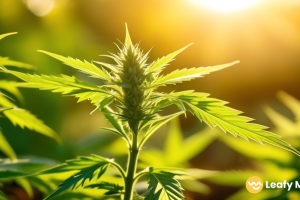
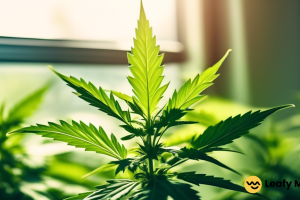
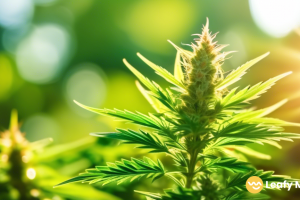




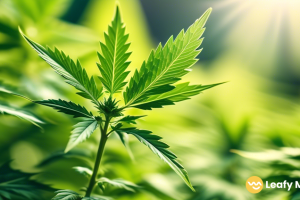
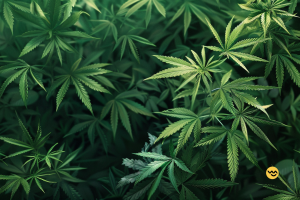
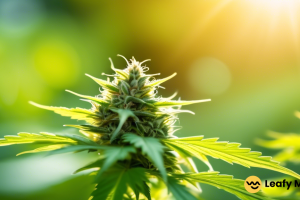
Leave a Reply